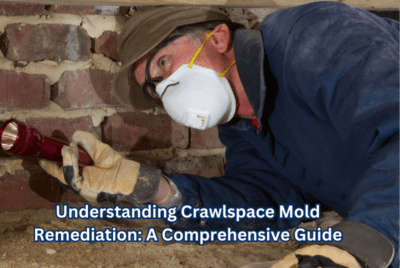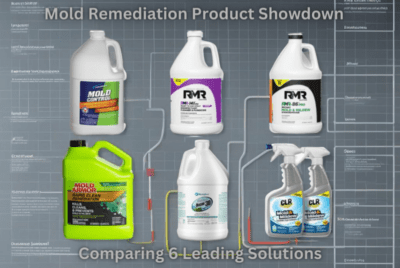Does Heat Kill Mold? Unveiling the Catch
Mold growth in homes can be a frustrating and potentially hazardous issue. It not only affects the appearance and structural integrity of our living spaces but can also have negative health effects. When faced with a mold problem, we often seek effective solutions to eliminate it. One common question that arises is whether heat can effectively kill mold. In this article, I will explore the relationship between heat and mold, explaining the impact of heat on different types of mold and discussing the effectiveness of heat as a mold remediation method.
Understanding Mold
What is mold?
Mold refers to a type of fungus that thrives in moist environments. It reproduces by releasing tiny spores into the air, which can easily find their way into homes. Mold spores are present in the air we breathe, but they only become problematic when they find suitable conditions for growth.
Common types of mold
There are numerous types of mold, but some of the most common ones found in homes include Aspergillus, Cladosporium, Penicillium, and Stachybotrys (commonly known as black mold). Each type has its characteristics, and their growth patterns can vary.
Mold growth conditions
Mold requires three key factors for growth: moisture, a suitable temperature, and organic material to feed on. In the presence of these conditions, mold spores can start colonizing surfaces, releasing enzymes that break down organic matter and allowing them to thrive.
Does Heat Kill Mold?
How heat affects mold growth
Heat can play a crucial role in inhibiting mold growth. Mold tends to thrive in environments with temperatures ranging from 68°F to 86°F (20°C to 30°C). When the temperature exceeds or falls outside this range, the growth of mold slows down or stops.
Temperature range for mold growth
Typically, experts recommend maintaining temperatures above 86°F (30°C) to effectively inhibit mold growth. Mold becomes dormant at higher temperatures, and prolonged exposure to elevated temperatures can kill mold colonies and prevent spore release.
Heat as a mold remediation method
Heat treatment can be an effective method for mold remediation in certain situations. By increasing the indoor temperature, it becomes possible to create an environment where mold growth is suppressed. However, when considering the question “Does heat kill mold?”, it’s important to note that heat treatment alone may not completely eradicate mold infestations, especially in severe cases.
Factors influencing the effectiveness of heat treatment
Several factors influence the effectiveness of heat treatment for mold remediation. The duration and intensity of heat exposure, the type of mold species present, and the extent of the mold infestation are all critical considerations. In some cases, heat treatment may require professional expertise to ensure optimal results.
The Effectiveness of Heat on Different Types of Mold
Heat sensitivity of mold species
Different types of mold exhibit varying degrees of sensitivity to heat. While some species are more susceptible to heat treatment, others may be resistant and require alternative remediation methods. Understanding the specific mold species involved is essential for determining the most effective approach.
Mold species resistant to heat treatment
Certain mold species, such as Aspergillus Niger and Aspergillus Fumigatus, have been found to be more resistant to heat treatment. Higher temperatures may be necessary to effectively control their growth, and additional remediation methods might be required.
Mold species susceptible to heat treatment
On the other hand, some mold species, like Stachybotrys (black mold), Penicillium, and Cladosporium, are generally more susceptible to heat treatment. These species can often be effectively controlled and eliminated by using targeted heat exposure.
Using Heat to Remove Mold
Professional heat treatment for mold removal
Professional mold remediation companies may utilize advanced equipment to raise the temperature in affected areas, effectively killing mold colonies. These treatments often involve precise temperature control and monitoring to ensure optimal results and minimize any potential damage to the property.
DIY heat treatments
For smaller mold infestations, certain DIY heat treatment methods can be attempted. These can include using space heaters, dehumidifiers, or even carefully placed heat lamps. However, it’s crucial to exercise caution and ensure that the process is carried out safely and effectively.
Safety precautions when using heat for mold remediation
When using heat for mold remediation, it is essential to follow safety guidelines. Ensure proper ventilation to prevent the buildup of excessive heat or humidity. Additionally, protective equipment, such as gloves and masks, should be worn to minimize exposure to mold spores.
Other Methods for Mold Remediation
Chemical treatments
Chemical treatments, such as mold-specific disinfectants or fungicides, can be used in conjunction with heat treatment or as standalone remediation methods. These treatments aim to kill and remove mold, but it’s crucial to carefully follow instructions and use appropriate protective measures.
Physical removal methods
Physical removal of mold-infested materials, such as drywall or carpeting, is often necessary in severe cases. This approach involves removing and properly disposing of affected materials to prevent further mold growth.
Preventing mold growth in the first place
Prevention is key when it comes to mold control. By addressing moisture issues, maintaining proper ventilation, and promptly addressing any water damage or leaks, you can significantly reduce the likelihood of mold growth in your home.
Conclusion
While heat can indeed be an effective method for inhibiting mold growth, its effectiveness may vary depending on the mold species and the extent of the infestation. Heat treatment alone may not eliminate all types of mold, especially those more resistant to higher temperatures. For severe or extensive mold problems, it’s advisable to seek professional mold remediation services. Remember to prioritize safety and consider preventive measures to minimize the chances of mold growth in the first place.
FAQs
1. Can heat treatment completely eliminate mold?
Heat treatment can significantly inhibit mold growth and eliminate certain mold species. However, its effectiveness depends on factors such as temperature, duration of exposure, and the type of mold involved. In severe cases, professional assistance may be necessary.
2. Are there any risks associated with using heat to kill mold?
While heat treatment can be effective, it’s important to exercise caution. High temperatures can damage sensitive materials or pose fire hazards. To ensure a safe process, it is important to follow adequate ventilation and safety precautions.
3. Can I use heat treatment for mold removal in all areas of my home?
You can use heat treatment in various areas of your home to inhibit mold growth. However, it is important to note that certain materials or objects within your home may exhibit sensitivity to high temperatures, making them susceptible to damage during heat treatment. When exposed to excessive heat, these sensitive items can warp, distort, or even melt. Examples of such materials include delicate fabrics, electronics, vinyl flooring, and certain types of plastics. Therefore, it is crucial to exercise caution and take necessary precautions to protect these items from potential harm during the heat treatment process. It’s important to assess the suitability of heat treatment for specific areas and consult with professionals if needed.
4. Is heat treatment a DIY method for mold removal?
You can attempt heat treatment as a DIY method for smaller mold infestations. However, it’s crucial to have a proper understanding of the process, follow safety guidelines, and ensure effective heat distribution throughout the affected area. For larger or severe mold problems, it’s recommended to seek professional assistance.
5. How can I prevent mold growth in my home?
To prevent mold growth, it’s important to address moisture issues promptly. Ensure proper ventilation in areas prone to humidity, fix any leaks or water damage, and maintain a clean and dry environment. Regular inspections and timely repairs can help prevent mold growth in the first place.




